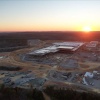You can use a pen to put that ribbon cutting ceremony in your calendar. That is if your project’s planners used the new 4D simulation designed by researchers at Concordia University.
The transition from draft board to finishing a building project is rarely smooth. Large construction projects are complex, with a variety of structural components being pieced together on a large scale. When problems arise, a seemingly isolated change of plans can disrupt a number of other tasks.
Large public works projects and reconstruction projects — when project leaders must manage construction and continued public use — can prove especially problematic.
The new simulation looks to simplify the process and reduce the chance of delay by isolating and minimizing risk of overlapping problems and schedule conflicts. The modeling allows planners to schedule different construction components in a way that minimizes the potential for ripple effect problems — keeping slowdowns and setbacks contained.
Planners can also use the model to ensure a balance between public use and building crews on transportation reconstruction projects. When total demolition is not an option, the simulation helps transportation planners smoothly transition traffic flows from old infrastructure to new infrastructure.
“This parallel coordination of construction and demolition activities with traffic flow is essential to the success of these projects,” Amin Hammad, a systems engineer at Concordia, said in a news release. “That’s why our new modelling method uses a 4D approach — taking into account the three normal space axes, plus time, to coordinate the traffic phasing with the demolition and construction of the old and new segments, respectively.”
Hammad is the lead author of a new paper on the construction simulator, published this week in the journal Automation in Construction.
“This study allows decision makers to better schedule construction and demolition activities to avoid any conflicts that may delay the project and increase the cost,” Hammad concluded.
http://www.upi.com/Science_News/2016/06/07/New-4D-simulation-may-prevent-construction-project-delays/2011465329664/















